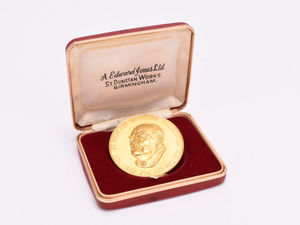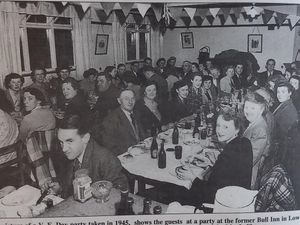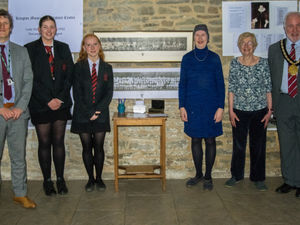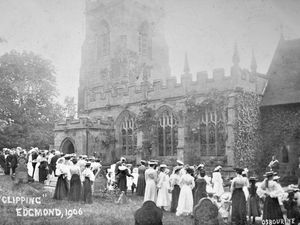The invisible art which made Telford European champions
Champions of Britain! Champions of Europe!
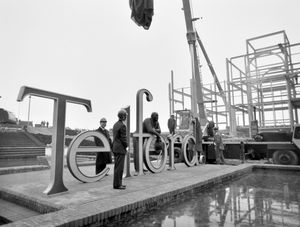
The awards just kept on coming for Telford as it was recognised as a top national and international "town of flowers."
First came a Gold award in 1988 in the Heart of England in Bloom competition. The following year saw Telford become outright winner of Britain in Bloom.
And then came the icing on the cake. In 1990 Telford won Entente Florale, the "European Cup" of towns of flowers.
It was one of the last great achievements of Telford Development Corporation before the body, which had been charged with creating the new town, was wound up the following year.
Today the legacy of Telford's 1970s and 1980s landscape designers comprises works of art which are taken for granted by residents.
"The good thing about landscape design is that even though it is an art and a craft, it is, unlike all the other arts, completely anonymous. We landscape architects don’t sign our work," says Allan Howard, who as a landscape architect who worked for the corporation from 1973 to 1988 was one of the team who created the look of the town, which is celebrating its 50th anniversary this year.
However, there were some artworks which were visible, as during the 1980s the corporation commissioned a series of them.
"Most were located in the town centre or the town park and were placed and administered by landscape architects as part of their job," said Allan, who lives at Harley, near Much Wenlock.
"The last and most notable was the Thomas Telford sculpture which stands in Civic Square, an iconic piece of work by the London sculptor Andre Wallace, to commemorate the 150th anniversary of Telford's death.
"This has the word Telford in very large cast iron letters, cast at Glynwed, with the figure of Telford in bronze. A trademark piece of whimsy by Wallace was that as Thomas Telford had walked on he had apparently hung his coat on the 'd' before casting his gaze over the town bearing his name."
The landscapers' work in the town is now well matured and can be seen anywhere you look. One quirk is that the Telford forestry team spelt out the word "Telford" in Upperhay Wood in the Coalport area when it was newly planted.
Allan says: "The most visible long lasting legacy must surely be the trees. As you drive around the town now in 2018 they seem to be everywhere, providing a natural backdrop to people’s lives.
"Telford is now a woodland town rich in wildlife with a green environment which is the envy of many other towns. Telford has been changed from utter dereliction to a visually attractive place.
"The trees were not too expensive to plant. They do not need a great deal of attention or maintenance except periodic selective thinning, and the species planted have a predicted life of between 150 and 400 years. What you see now is what was planted but with more than 30 years' growth. Trees are literally a growing and a long lasting asset.
"The extensive shrub planting has a somewhat lesser lifespan and shrubs need more maintenance but they are a vital element at a lower and more intimate level.
"Many varieties of flowering shrubs were planted, but apart from the daffodils, we did not plant flowers, that is, annuals and perennials, the reason being that, apart from some office gardens on the industrial estates for example, or special gardens occasionally, this kind of planting needs much more maintenance and replacement. Normally we were operating on a different scale and timescale than the typical garden.
"So what you see now is very largely what was planted pre-1988. However it must be borne in mind that Telford & Wrekin Council has both maintained the pre-1988 landscape and added to this in the later years."
There were some particular growing challenges.
"Growing conditions in the Ironbridge Gorge were generally better than the Town Park because of its sheltered location and milder microclimate, although in some situations areas of industrial waste were encountered. In the Town Park trees tended to take several years to establish, but then growth would revert to normal.
"The Town Park area contained a great number of mine shafts and old colliery spoil heaps. The mine shafts were all capped and made safe by the engineering department. The old spoil heaps, of which there were many, were regraded and reshaped by Landscape, to create a more natural appearance. Top soiling and tree planting followed.
"Southwater Lake and Withy Pool were enlarged and reshaped and some lake edges were hard paved or naturalised. A very large high jet fountain was installed in the lake.
"This area, forming the showpiece of the Town Park, has, since TDC days, been dramatically redesigned with extensive paved areas adjacent to large water areas.
"Another example of the many challenges which we faced was the planting relating to roads. Many roads were designed with noise mounds separating the road from the adjacent development areas. As these mounds consisted of excavated road rubble topped with a mixture of top soil and sub soil, planting conditions were extremely difficult.
"An early example of this situation was the Eastern Primary Road - the Queensway - from Madeley to the town centre. To counter the problem alders were mainly used as these trees fix their own nitrogen and can cope with the difficult conditions."
Allan says there were two large sculptures conceived and designed by a member of the landscape department and administered through the engineering department.
These were the 22 metre high concrete Trihedral Spire, which is on the Naird roundabout on the entry to the town from the M54. It dates from 1984. The other is a representation of Thomas Telford's stonemason's mark, which is on a roundabout on the eastern approaches to the town.

